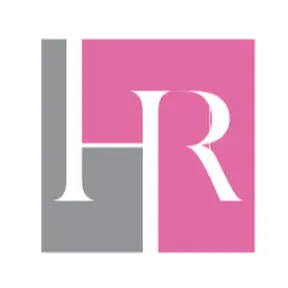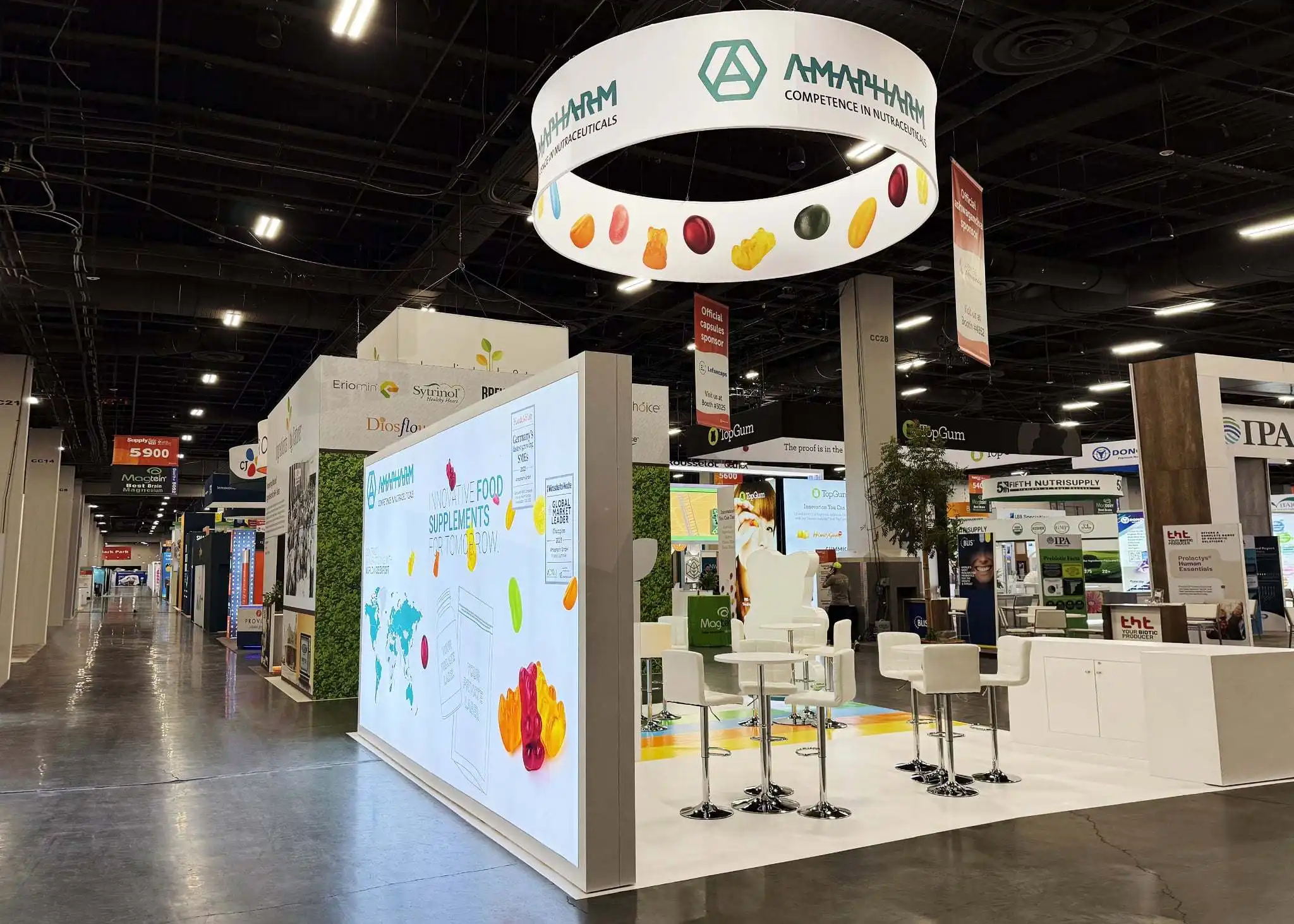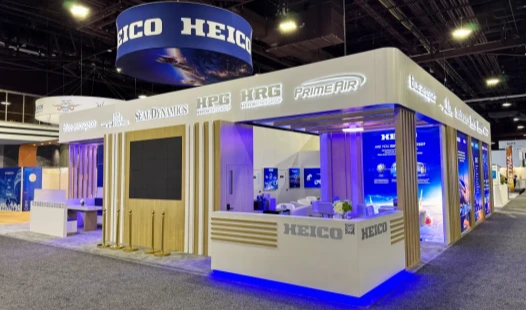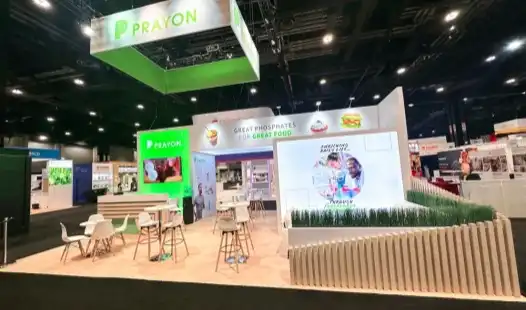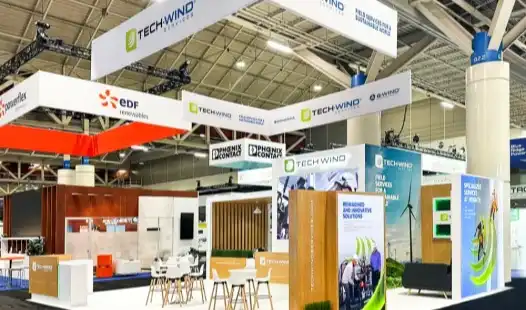Understanding the Importance of Strategic Booth Layout
The layout of your trade show booth is the foundation of your exhibit's success. A well-planned layout guides visitors through your space, highlights key products or messages, and facilitates meaningful interactions. However, many exhibitors overlook this crucial aspect, leading to ineffective presentations and missed opportunities.
Common Layout Mistakes
One of the most common and costly mistakes exhibitors make in booth design is overcrowding their booth space. In an effort to showcase every product, service, or marketing material, many brands end up creating a cluttered and visually overwhelming environment that dilutes their central message. A booth filled with too many elements can confuse visitors and prevent them from identifying the company's core strengths or focus. Instead, prioritize clarity and storytelling—choose a limited number of flagship offerings and present them in a visually cohesive manner.
Another frequent oversight in booth design is underutilizing vertical space. Many booths remain visually flat, missing the opportunity to stand out in a crowded exhibition hall. Incorporating elevated design features such as suspended banners, layered displays, or backlit graphics can increase visibility and add depth. Proper lighting and vertical elements not only attract attention from afar but also enhance the overall dimensionality of your space.
Optimizing Your Booth Flow
Creating a booth that encourages intuitive movement requires understanding both design principles and visitor psychology. Attendees should be able to enter, explore, and exit your booth with ease, guided by natural pathways and visual cues. Begin by positioning your most eye-catching features—such as interactive displays or product highlights—at the entrance to immediately capture attention. From there, guide visitors through different sections of the booth, ensuring each area serves a distinct purpose, such as demonstrations, consultations, or interactive engagement.
Strategic placement of signage, flooring patterns, or lighting can subtly influence movement and prevent bottlenecks. Including comfortable seating areas or semi-private discussion zones encourages longer interactions and gives your staff opportunities for meaningful engagement. Ultimately, a well-structured flow not only enhances visitor experience but also maximizes the efficiency and impact of your trade show presence, turning your booth into a dynamic space that both informs and inspires.
The Role of Lighting and Visual Elements in Booth Design
Lighting and visual elements play a crucial role in creating an attractive and effective trade show booth. These components not only enhance the overall aesthetics of your space but also help guide visitors' attention to key areas and create the right atmosphere for your brand.
Lighting Mistakes to Avoid
One of the most overlooked aspects of booth design is lighting, yet it has one of the strongest psychological effects on visitors. Poorly executed lighting can drastically diminish the appeal of even the most creative booth. Dim lighting makes spaces appear dull and uninviting, while overly bright or uneven illumination creates glare, visual fatigue, and discomfort. Relying solely on the venue's standard overhead lighting is a common mistake that results in flat, uninspired presentations. The most effective approach is to use a balanced, layered lighting system.
Accent lighting should draw attention to featured products or graphics, ambient lighting should establish warmth and comfort, and task lighting should illuminate functional areas such as demo stations or meeting tables. LED systems offer versatility in brightness and color temperature, enabling you to adapt lighting to your brand's aesthetic. When thoughtfully implemented, lighting doesn't just improve visibility—it shapes visitor perception, evokes emotion, and strengthens your brand presence.
Effective Use of Visual Elements
Visual communication is the heart of booth design, as it conveys your message instantly in a fast-paced exhibition environment. Elements such as banners, digital screens, infographics, and branded graphics must be both striking and purposeful. The most effective visuals are those that communicate your message clearly and cohesively, without overwhelming visitors with information. High-resolution imagery, bold typography, and consistent color palettes create visual harmony and professional polish. Large-format graphics visible from afar can attract initial attention, while closer interactive visuals—such as touchscreen displays, augmented reality experiences, or looping videos—keep visitors engaged once inside.
Every visual component should align with your brand identity, reinforcing recognition and trust. Moreover, dynamic content can bring storytelling to life, showing your brand's innovation and personality. However, moderation is key: overly busy visuals distract rather than captivate. When balanced correctly, your booth's visual ecosystem becomes a powerful storytelling tool—one that transforms casual visitors into deeply engaged prospects.
Balancing Technology and Human Interaction in Your Booth
In today's digital age, incorporating technology into your booth design can significantly enhance your trade show presence. However, striking the right balance between technological innovation and meaningful human interactions is crucial for success.
Technology Integration Pitfalls
One of the biggest challenges in modern booth design is over-reliance on technology. While impressive screens, automated presentations, and interactive systems can capture attention, they can also make the experience feel detached if not anchored by personal engagement. Visitors may admire the technology but leave without forming a meaningful connection with your team or brand. Another common pitfall is adopting technology without strategic intent—adding new gadgets or digital features simply to appear innovative.
Without clear objectives, this can lead to cluttered booth experiences, confused visitors, and wasted investment. Technology should always have a defined role—whether it's simplifying product education, enhancing storytelling, or improving data collection. Successful integration requires purposeful design, seamless functionality, and alignment with your brand's communication goals.
Creating a Balanced Booth Experience
To design a booth that harmonizes technology and human interaction, start by identifying how each digital component supports your exhibition goals. For example, a virtual reality product demo can create immersive experiences that attract attention, while touchscreen catalogs or digital kiosks can offer visitors freedom to explore at their own pace. However, these tools should lead to personal interaction—your team should use them as conversation starters, not replacements.
Organize the booth layout to encourage both independent exploration and direct communication, with defined spaces for demonstrations, consultations, and casual dialogue. Additionally, technology can be used to streamline engagement—digital lead capture systems, mobile check-ins, and real-time analytics allow you to collect data efficiently while maintaining a personal touch. Ultimately, the key lies in ensuring that every technological feature enhances visitor experience, supports meaningful conversation, and reinforces your brand's human-centered approach to innovation.
Conclusion
Effective booth design is a critical component of trade show success, requiring careful planning and attention to detail. By avoiding common mistakes in layout, lighting, visual elements, and technology integration, exhibitors can create engaging spaces that attract visitors and effectively showcase their brand. Remember to prioritize clear messaging, strategic use of space, and a balance between innovative technology and personal interaction. Learning from real trade show experiences and continuously refining your approach will help ensure your booth stands out in a crowded exhibition hall, maximizing your investment and driving meaningful business outcomes.
At HR Exhibits, we understand the complexities of creating impactful trade show booths. Our team of experts combines creativity with logistical expertise to deliver memorable exhibition experiences tailored to your brand. Whether you're planning for CES, SHOT Show, or any other major event, we offer comprehensive services from initial design to on-site execution. Let us help you avoid common booth design pitfalls and create a standout presence at your next trade show. Contact us at info@hrexhibits.com to start planning your next successful exhibition.
FAQ
How far in advance should I start planning my trade show booth?
Ideally, you should begin planning 3-5 months before the event. This allows ample time for design, fabrication, and logistics coordination. However, our team at HR Exhibits is flexible and can accommodate more urgent timelines when necessary.
What information do you need to start designing my booth?
To get started, we typically require your booth size, the name of the show you're attending, your design ideas or preferences, and your budget. This information helps us create a tailored proposal that meets your specific needs and goals.
Do you offer rental options for booth components?
Yes, we provide rental options for furniture, AV equipment, and lighting to create a complete booth setup. This can be a cost-effective solution, especially for companies new to exhibiting or those participating in multiple shows.
References
1. Smith, J. (2022). "Trade Show Booth Design: Lessons from Industry Leaders". Exhibition World Magazine, 45(3), 28-35.
2. Johnson, A. & Lee, S. (2023). "The Impact of Effective Booth Design on Trade Show ROI". Journal of Marketing Events, 17(2), 112-126.
3. Brown, M. (2021). "Technology Integration in Modern Exhibition Spaces". Event Tech Today, 8(4), 56-62.
4. Garcia, R. (2023). "Lighting Strategies for Memorable Trade Show Exhibits". Exhibit Design Quarterly, 29(1), 18-24.
5. Wilson, T. & Harris, E. (2022). "Balancing Digital and Personal Engagement in Trade Show Booths". International Journal of Event Management, 14(3), 301-315.
